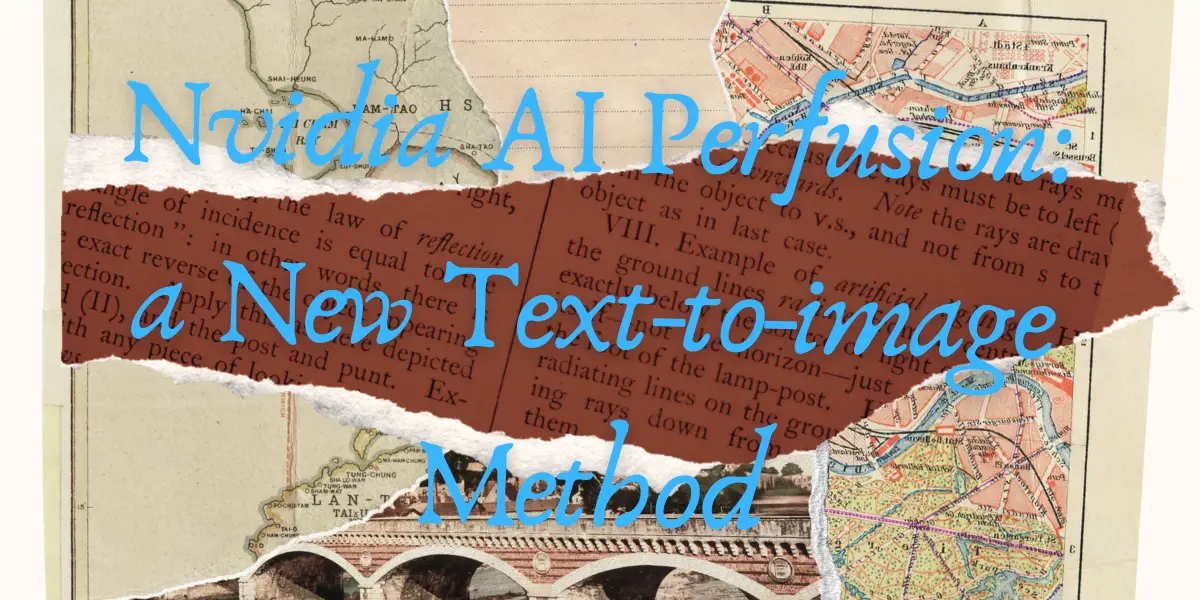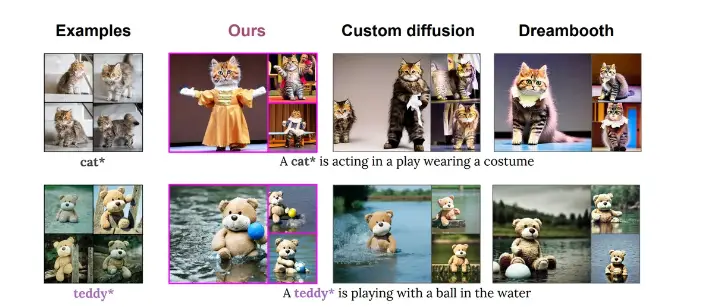Nvidia AI Perfusion: a New Text-to-image Method

In the dynamic world of AI-powered art tools, Nvidia’s research team has unveiled a groundbreaking text-to-image personalization technique named Perfusion. Unlike its high-cost, heavyweight counterparts, Perfusion’s uniqueness lies in its compact size of 100KB and a swift training duration of just four minutes. This compact yet powerful tool offers substantial creative liberty in rendering personalized concepts while preserving their essence.
Table of Contents
What is Nvidia AI Perfusion?
Perfusion is a text-to-image personalization method developed by Nvidia. It’s a unique tool in the field of AI art creation due to its compact size and quick training time. Despite being only 100KB in size and requiring just four minutes for training, Perfusion offers significant creative flexibility for portraying personalized concepts while maintaining their identity.This innovative method, Perfusion, was showcased in a research paper by Nvidia and Tel-Aviv University, Israel.
How Does Nvidia AI Perfusion Work?
Perfusion introduces a novel concept known as “Key-Locking.” This technique links new concepts, like a specific cat or chair, to a broader category during image generation. This approach helps prevent overfitting, a common issue where the model becomes too narrowly attuned to the exact training examples, hindering the AI’s ability to generate new creative versions of the concept.
Read More About:How to Use Picrew to Make TikTok Animation?
Key Features of Nvidia AI Perfusion
Multiple Personalized Concepts Integration
Perfusion’s “less is more” philosophy also allows multiple personalized concepts to be integrated into a single image with natural interactions. This feature is a stark contrast to existing tools that learn concepts in isolation. Users can steer the image creation process through text prompts, merging concepts like a specific cat and chair.
Balancing Visual Fidelity and Textual Alignment
Furthermore, Perfusion provides a unique feature that enables users to control the balance between visual fidelity (the image) and textual alignment (the prompt) during inference by adjusting a single 100KB model. This feature empowers users to explore the Pareto front (text similarity vs image similarity) and select the optimal trade-off that suits their specific needs, all without the need for retraining.
Read More About:How to Use RunwayML Gen 2:Step By Step Tutorial
Perfusion Compares with Other AI Image Generators

In comparison to other AI image generators, Nvidia’s Perfusion delivers superior visual quality and alignment to prompts. Its ultra-efficient size allows it to update only the necessary parts during fine-tuning, as opposed to the multi-GB footprint of methods that fine-tune the entire model.Despite its compact size, it surpasses the performance of adjustment methods employed by top-tier AI art generators such as Stability AI’s Stable Diffusion v1.5, the recently launched Stable Diffusion XL (SDXL), and MidJourney in terms of specific edition efficiency.
Read More About:Stability AI Releases New Stable Diffusion XL 1.0 Model
Nvidia's Focus on AI
This research aligns with Nvidia’s growing focus on AI. The company’s stock has surged over 230% in 2023, as its GPUs continue to dominate training AI models. With tech giants like Anthropic, Google, Microsoft, and Baidu investing heavily in generative AI, Nvidia’s innovative Perfusion model could provide a competitive edge.
Future Plans of Perfusion
As of now, Nvidia has only presented the research paper of Perfusion, with a promise to release the code soon.

